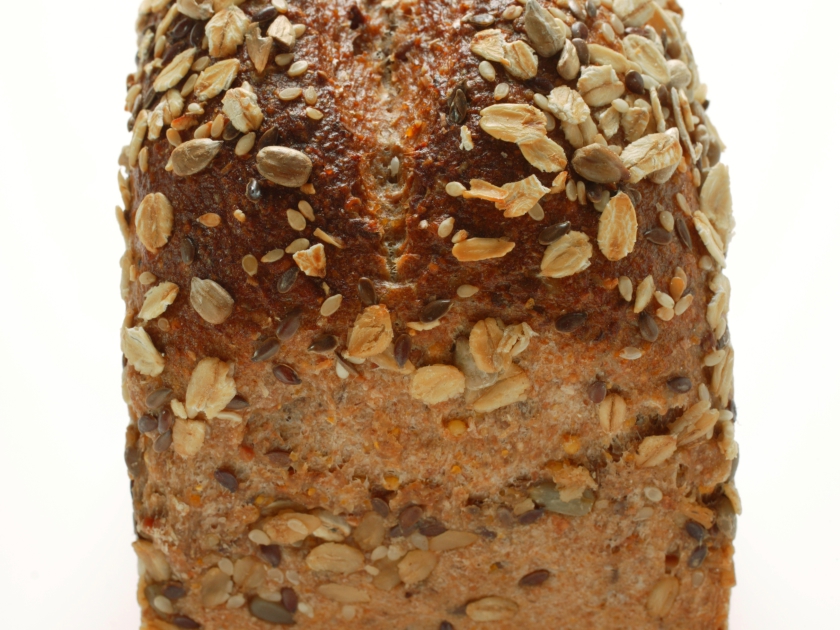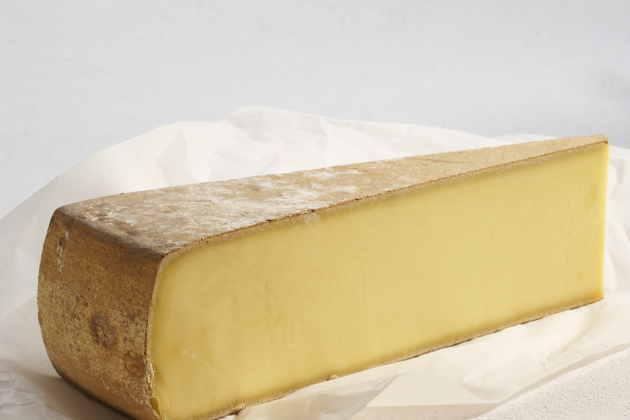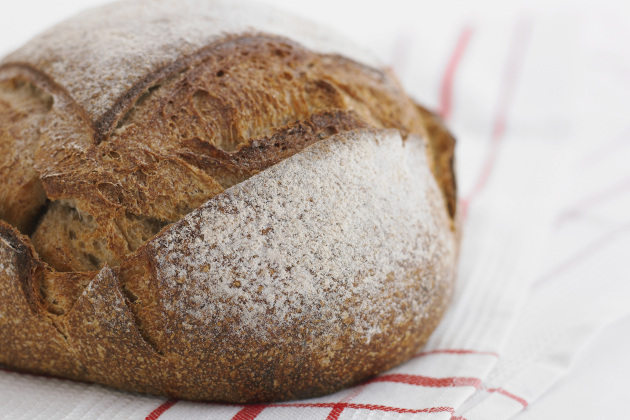Comté
A magnificent cheese from the mountain pastures, displaying over 80 aromas, this delightful pressed cheese from Franche-Comté is the leading AOP cheese in terms of volume produced. The size of its wheels can be explained by the centuries-old tradition of blending the milk of several small herds to make large cheeses which were aged at altitude for months and were not brought down to the valley until the end of summer. Fruit farms now continue this cooperative tradition.
Comté, a mature cheese par excellence, must be kept in a cellar for at least four months, but it benefits from staying there even longer – you can find Comtés that are 36 months old! The production period will determine the colour of the cheese and some of its sensory characteristics: a yellow centre for a summer Comté with fruity aromas, and ivory for a winter Comté marked by hay. The rind, hard and more or less thick following the maturation period, may vary from golden yellow to brown, depending on the cellar environment. The centre, with its firm texture, depending on the temperature of the aging cellar, may feature little “eyes” formed after carbon dioxide is released. On aged Comtés, small white crystals of tyrosine, mistaken for salt crystals, can also be dotted across the surface, creating particular taste sensations in the mouth.
Comté has an incredible diversity of aromas, grouped into six families which are combined in different and original ways depending on the cheeses: milky, fruity, roasted, herbal, animal, spiced. You can distinguish notes of hazelnut, boiled milk, coffee, brioche, and even grapefruit or leather! It is a sign of quality if the flavours are well balanced: a salty flavour is generally provided by the salt which is used to rub the cheese during maturation, while a subtle acidic taste can be found in young cheeses, sweet which is clearly noticeable in certain cheeses and develops during maturation, and sometimes, there is a slightly bitter aftertaste which, if it is not too strong, positively shapes the taste of certain cheeses.
Walnut bread
This bread, with generally a tight and soft centre under the crunchy crust, can be found in a more or less rustic version depending on whether it contains rye flour. The use of this flour, and the frequent addition of yeast in the production of walnut bread, contributes to the slight bitterness created by the crushed nuts. Adding these oily nuts adds a vibrant aroma and creates a contrast between crisp, crunchy and fondant textures.
Sensory pairing: a successful encounter around an aromatic note
The aroma of the walnut bread matches beautifully with the hazelnut notes of the Comté, the nutty aromas creating a lovely pairing. When it is chewed, Comté melts in the mouth in a homogeneous way, creating a contrast with the crunchy nuts. And if a small grain of tyrosine happens to enter your mouth while tasting the bread, your taste buds will rejoice! You could also opt for something simpler like a crunchy baguette, with a light crust that fits well with the density of the Comté, and whose subtle taste will not try to compete with the aromatic complexity of this cheese.
Another potential pairing: seeded bread
 繁體中文
繁體中文  简体中文
简体中文  한국어
한국어  Français
Français 





